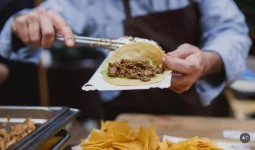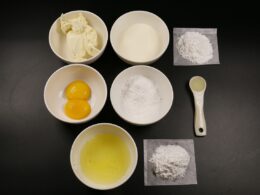Using different types of spices can transform a bland dish into one brimming with flavor and fragrance.
Spices are aromatic flavorings derived from plant parts such as seeds, fruits, bark, rhizomes, and rhizomes.
Spices have been highly valued as trade goods for thousands of years and have been used to season and preserve food, as well as medicines, dyes, and perfumes.
Spice comes from the Latin species, which means merchandise or wares. Although spices are sold dried, this does not guarantee they will last permanently.
Their robust flavors will fade with time, especially if exposed to light and air.
So some of the different types of spices are;
1. Garlic
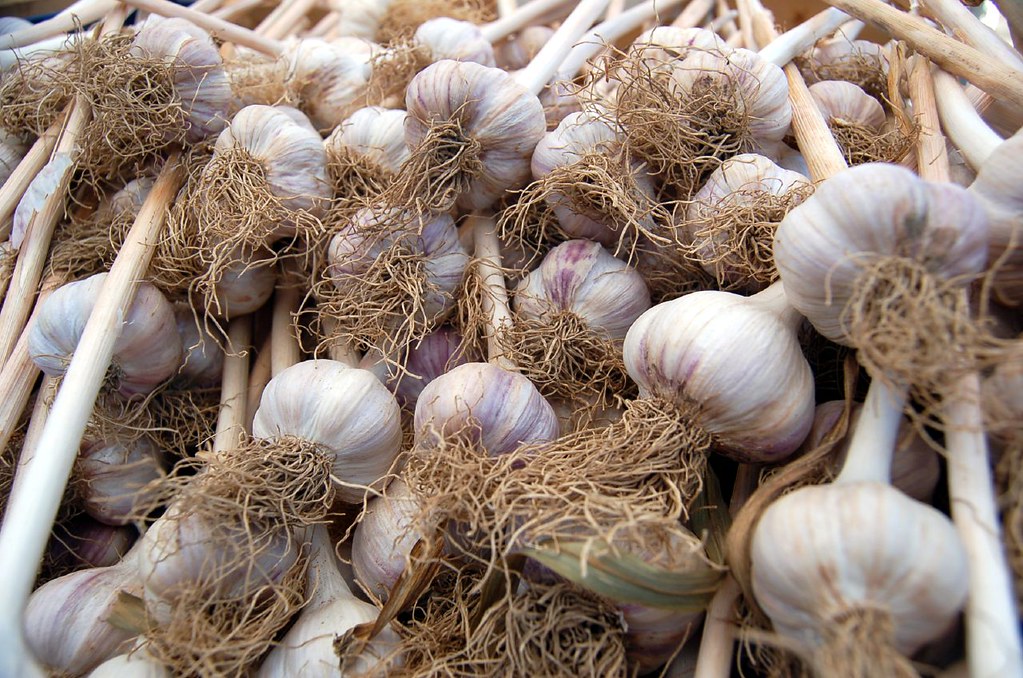
The botanical name for garlic is Allium sativum. It is a fairly common spice that can be found in practically every food and cuisine worldwide.
Even though it has a strong odor, it is a popular spice for cooking. When you add it to your foods, it gives them a unique flavor and lovely flavor.
Garlic can be prepared in a variety of ways. Besides, some people smash garlic, while others chop it, and you may even add garlic powder to your dishes to boost the flavor and spice.
You may use powdered garlic to build a spice blend for your dinner by adding different spices.
Furthermore, fresh garlic also benefits your health because it contains numerous antibacterial properties.
2. Allspice

Allspice is one of the different types of spices. The tropical Pimenta dioica tree’s dark dried fruit, a clove native to the West Indies and Central America, gives Jamaican jerk seasoning and Swedish meatballs their characteristic flavor.
In the seventeenth century, Europeans decided that it tasted like a mix of cinnamon, nutmeg, and clove, with which it shares its principal fragrant ingredient, eugenol.
3. Anise
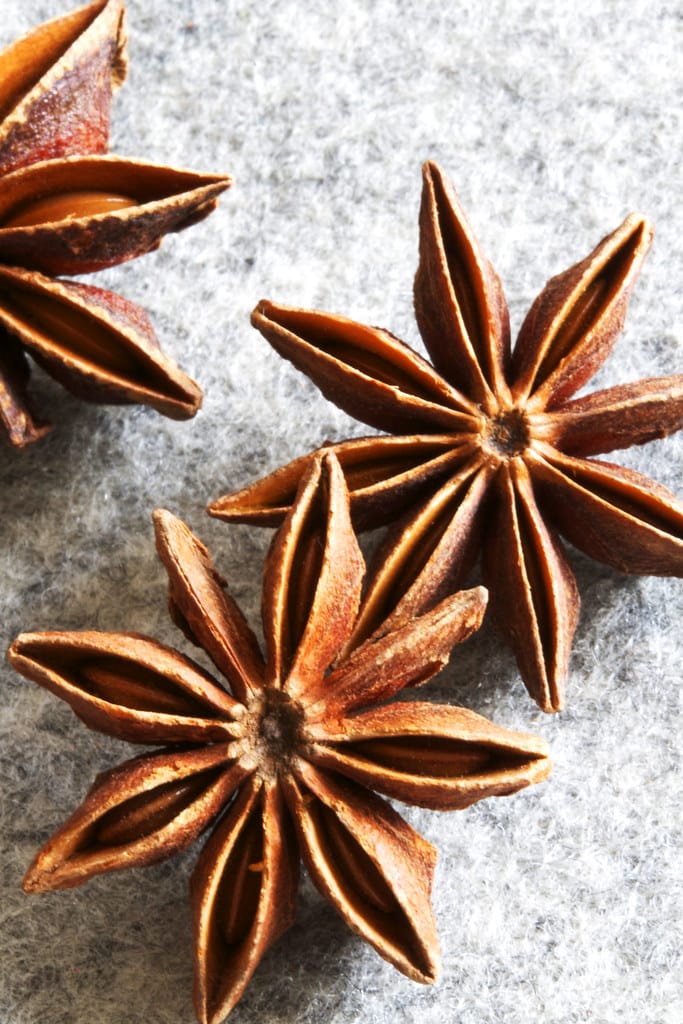
Anise imparts a licorice-like sweetness to meals. However, it’s commonly used to flavor bread and beverages like Hot Mulled Tea, pork, and chicken in Southeast Asian cooking.
4. Tumeric

Turmeric is one of the essential types of spices. Curcuma longa is the botanical name for turmeric, a yellow aromatic root spice.
Furthermore, this fragrant spice is linked to ginger and is commonly used in Indian cooking. This spice is known as “golden spice” because of its hue.
Furthermore, Turmeric can add a gorgeous orange or golden color to curries, rice, and stews.
In addition, turmeric has a woody and earthy flavor. Ayurvedic golden turmeric milk is one of the most popular health drinks made with this Asian spice.
5. Black Pepper

This has to be one of the world’s most extensively used and consumed spices. Besides, a pinch goes into practically every recipe you can think of.
Furthermore, Black pepper is believed to have originated in India, specifically in the Malabar region and the Western Ghats.
It’s manufactured from the pepper plant’s berries, and white and green peppercorns are prevalent. The differences in hue are primarily due to the different stages of growth.
6. Cinnamon

Cinnamomum Verum is the botanical name for cinnamon, which is one of the world’s oldest spices.
It is the most aromatic spice for flavoring foods. Powdered cinnamon can be sprinkled on pastries, cakes, savory foods, and even coffee.
Cinnamon comes in various varieties, with the highest quality being Ceylon cinnamon. Furthermore, Ceylon cinnamon is more expensive than Cassia cinnamon, which has a similar flavor but is less costly.
7. Caraway

Caraway is one of the different types of spices. It was one of the first spices cultivated in Europe, where classes are still used to flavor sauerkraut, pork, and potato dishes.
Additionally, it is the dried fruit of Carum carvi, another parsley family member. Furthermore, Anethole, carvone (rye notes; also found in dill), and limonene give it a toasty, anise-like flavor (citrusy).
8. Chinese Five Spice

Cinnamon, cloves, fennel seeds, star anise, and Szechuan peppercorns blend in equal amounts to make Chinese five-spice.
Furthermore, you may prepare your own or buy prepackaged mixes in Asian markets and most grocery stores to use in Chinese cuisine. Additionally, it is most typically used in meals that contain soy sauce.
9. Ginger

Ginger is one of the essential types of spices. Zingiber officinale (ginger) is the common name for the blooming plant Zingiber officinale (ginger).
Ginger, like turmeric, is a spice made from the plant’s root. This slightly sweet, spicy pale-yellow component has a robust, peppery flavor with unique zesty undertones.
Ginger can spice up a stew, curry, or dessert in various ways. Ginger can be chopped, juiced, grated, or powdered for use. It can also be used to make a nice ginger-infused hot beverage.
Moreover, ginger is common in Asian cuisines such as Japanese, Thai, Chinese, and others.
10. Pepper

Piper Nigrum is the botanical name for pepper. Pepper is not a single word that can be defined, but it can apply to various plants that can impart heat to food, making it spicy.
Additionally, pepper comes in various hues, the most common being pink, black, red, and green.
Furthermore, when used in food or any meal, it has a burning taste, and if you taste it too much, you may feel like your tongue is on fire.
Meanwhile, these are available in various shapes and flavors, such as mid-tasting. Jalapeno, a dash of sweet bell pepper with a searing effect, can make your tongue feel burning if you taste it.
11. Cloves

Cloves are the immature dried flower buds of the Syzygium aromaticum tree, native to Indonesia.
They have been used in Chinese cuisine for thousands of years and in European cuisine since the Middle Ages.
It has the largest concentration of scent components of any spice, with 14 to 20% essential oil content.
Additionally, the antibacterial eugenol in cloves gives them their characteristic flavor, which has made them a popular medication.
Besides, the medicinal flavor of these dried flower buds is vital in recipes like roasted ham, Chinese five-spice, apple crumble, and mulled wine.
Take it easy on them because they can quickly overwhelm you. Cloves are also a type of spice.
12. Curry Powder

Curry powder is a powdered spice blend that varies according to area and recipe. Coriander, cumin, turmeric, ginger, mustard, fenugreek, cinnamon, clove, cardamom, chiles, and black pepper are commonly used.
In addition, gravy-based foods like Indian curries have a solid and spicy flavor due to the mix of spices. You can use it in a marinade or as a dry rub for beef, fish, lamb, veal, and potatoes.
13. Dried Herbs

Herbs are generally considered fresh plant leaves, while spices are usually considered bark, fruit, or seed components.
However, rosemary, curry leaves, thyme, kaffir lime leaves, and oregano are among the dried leaves that earn a spot in the spice cabinet.
Additionally, remember that dried herbs have a distinct flavor from fresh herbs and cannot be substituted one-for-one.
Bay leaf, a member of the laurel family, is one of the most common dried herbs. It is commonly used to flavor soups, stews, braises, and marinades.
Furthermore, File is made from dried sassafras leaves, also from the laurel family, and is used in gumbo and other Creole cuisines.
14. Nutmeg

Nutmeg is one of the essential types of spices. It has a flavor that is warm, spicy, and sweet.
In addition, it’s excellent in sweet foods like spiced baked goods, custards, and eggnog, as well as on fruits.
Furthermore, it can also be used to make savory dishes with vegetables, such as broccoli and mushroom quiche. Nutmeg, like mace, is often used in East Indian cuisine.
15. Vanilla

The pod-shaped fruit that grows on a climbing orchid of the genus Vanilla, which includes roughly 100 species, is what we call the vanilla bean.
Additionally, the pods are 6 to 12 inches long and contain thousands of tiny seeds that cling to the pod walls.
Vanillin (together with roughly 200 other aromatic chemicals) is found in the sticky resin covering the seeds and the pod wall, giving vanilla flavor.
Furthermore, vanilla beans that have just been harvested have no scent; they must be damaged to release their aromas, which can take a few weeks to several months.
Because extended heat will cause the taste to fade, the vanilla extract should be added near the conclusion of the cooking process.
In crème brûlée and cake frostings, vanilla bean seeds are a common ingredient.
16. Paprika

Paprika is a type of spice. It is prepared from dried and ground sweet orange and red peppers of various varieties. Depending on the kind, it can range from moderate to spicy.
Eggs, rice, sweet potatoes, root vegetables, sauces, roast meats, and fowl go well with paprika, which is widely used in Spanish, South American, and Hungarian cuisines.
17. Saffron

Saffron is the most expensive spice on the planet. It is made from the stigmas of the saffron crocus, which look like tiny, thin orange threads.
Furthermore, this exotic orange spice is included in the category of sweet spices. It has a floral, slightly sweet flavor and scent, adding brilliant color to the cuisine.
Additionally, saffron is a culinary spice in Persian, Middle Eastern, and European cuisines. Despite its high price, Saffron’s beauty is that a little goes a long way.
18. Onion Powder

Onion powder is also one of the different types of spices. Ground onion powder is an excellent seasoning spice for almost any dish.
Onions (Allium cepa) are one of the most versatile vegetables. Dehydrated onion powder can also be added to hamburgers, stews, soups, and marinades or used to produce homemade spice blends.
Furthermore, dried onion powder can be used instead of salt as a flavoring on pizzas, poultry, or meat rubs.
19. Mustard Seed

Mustard seeds (Brassica alba) are tiny seeds that range from black to brown to white to yellow.
However, this is a different type of spice with a long history. Prepared mustard is made by mixing ground mustard seeds with vinegar, water, and additional seasonings.
This is a popular condiment for flavoring and seasoning food. It’s also used extensively in Indian cooking.
Furthermore, mustard seeds are usually used whole when pickling cucumbers (gherkins) and other vegetables.
20. Sumac

The botanical name for the Sumac is Rhus coriaria. Sumac berries are crimson and are sourced from the Sumac plant.
Furthermore, this flowering shrub can be found throughout Africa, Eastern Asia, and North America. Additionally, the acidic lemon flavor of these deep reddish-purple berries is unmistakable.
It’s recognized for its tangy flavor. As you know, there are a variety of essential spices available around the world. Here are their uses and intriguing facts.
In addition, they all have varied flavors. Some are similar in some ways, but each spice has its distinct aroma and flavor.
Happy seasoning with the greatest spices and giving your dishes and cuisines a flavor that can be appreciated.
21. Garam Masala

Garam Masala is one of the different types of spices. It is a spice mixture comparable to curry powder but contains neither cumin nor caraway.
The cook and the recipe will determine the spice blend, just as with curry powder. In addition, black pepper, fennel, cinnamon, clove, and cardamom are typically used, with mace and nutmeg thrown in for good measure.
In addition, it’s a common ingredient in Indian cooking, and it offers a deep, rich flavor. It’s generally added near the conclusion of the cooking process.
22. Fenugreek

Fenugreek is a must-have ingredient in Indian and Middle Eastern cooking. Toasted fenugreek seeds are used in the spice mix of several curry powders.
In addition, the seeds have the appearance of pale golden stones. When burned, their essential oils provide a spicy yet sweet scent.
23. Black Cumin

Nigella sativa is the botanical name for Black Cumin, a highly significant spice widely used in India. It is also a member of the Caraway Seeds family. Furthermore, the flavor of black cumin is bitter.
As a result, it is added to meals and dishes to give them a unique taste, but only in small amounts. However, it’s also a fantastic way to get black seed oil.
There is also a type of black cumin that imparts a smoky flavor to meals and is commonly utilized in many countries worldwide. It is also one of the different types of spices.
24. Galangal Root Powder

The galangal root powder is made from galangal, a tropical shrub native to East Asia. It is best found in Southwest India and the Eastern Himalayas.
In addition, galangal was first introduced to Europe in the 9th century; since then, it has grown in favor of the culinary world.
Furthermore, galangal was dubbed the “spice of life” in ancient times because it was thought to play a significant role in Saudi traditional medicine.
Because it is related to ginger, it has a flavor profile similar to ginger; nevertheless, the galangal spice has a flavor of piney cactus.
25. Coriander Seeds

Coriander seeds are another spice type with a sweet, lemony flavor commonly used in Indian and Mexican cuisine.
Furthermore, any spice’s lemon flavor can be amplified by a fair bit of Coriander Seeds. In addition, the best part is that the scent may also be utilized to dry-fry with other tiny seeds to extract essential oils.
26. Fennel

Foeniculum vulgare is the botanical name for fennel. It grows in Mediterranean countries; thus, it will appear in French, Italian, and Spanish cuisines.
It belongs to the sweeter spice family, with a sweet flavor and a mild scent. Because fennel and anise seeds are so similar, it’s hard to tell them apart when mixed. Ground fennel seeds are used in Chinese cuisines as a spice blend in unusual foods.
Furthermore, it’s also the primary ingredient of Garam Masala, a popular Indian spice mix used in home and restaurant kitchens.
27. Pumpkin Spice

Pumpkin spice is a popular flavor enhancer for coffee and other sweet drinks and the main ingredient in pumpkin pie.
Isn’t it fantastic that so many different kinds of delicious spices are available worldwide?
You’ll be able to recognize some of the most frequent and widespread spices in most of your cuisines and dishes now that you’ve learned about them!
28. Chili Pepper
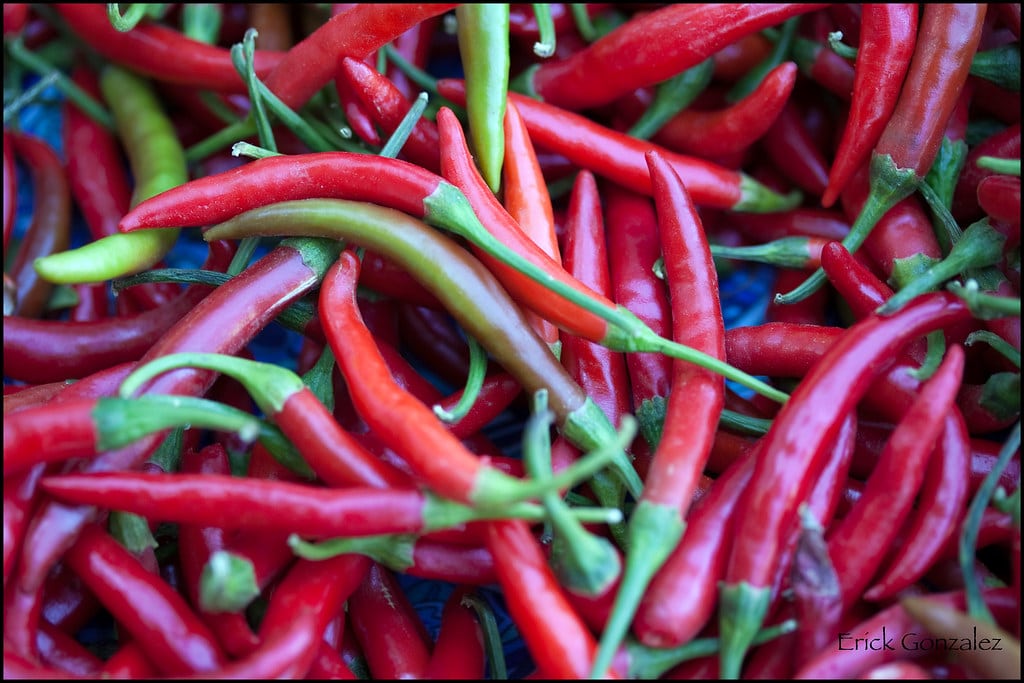
Like cayenne pepper, Chili pepper is an excellent way to boost the spice and heat in the Caribbean, Indian, or Mexican dishes. Furthermore, Chili powder is also a term for a spice combination used in Latin American cuisine.
Chili powder, paprika, cumin, garlic powder, and oregano are other spices used in chili powder.
29. Ajwain

Ajwain is one of the different types of species. This spice is an annual herb in the Apiaceae family that goes by several other names, including bishop’s weed and ajowan caraway. In addition,
Ajwain seeds are small and oval-shaped, and they resemble cumin, caraway, and fennel seeds.
Furthermore, these seeds have a bitter, spicy flavor and a strong scent similar to the plant thyme.
It is primarily grown and manufactured in India and Iran. Furthermore, this spice is often dry-roasted or fried in oil, giving it a rich scent and delicate flavor.
30. Celery Seeds

Celery seed is typically pounded into salt and then added to various meals for a pronounced celery flavor.
In conclusion, the different types of Spices should be purchased in modest quantities and used immediately to acquire the maximum scent and flavor.
However, if possible, ground whole spices rather than buying them prepackaged to get the best flavor.
In addition, you can use a mortar and pestle or an electric coffee grinder to grind them. For up to 6 months, store whole and ground spices in airtight containers in a cool, dark place.
Spices can transform your food by adding new flavors and scents without oil, sodium, or calories. Experiment with different spices to see which ones you prefer.





